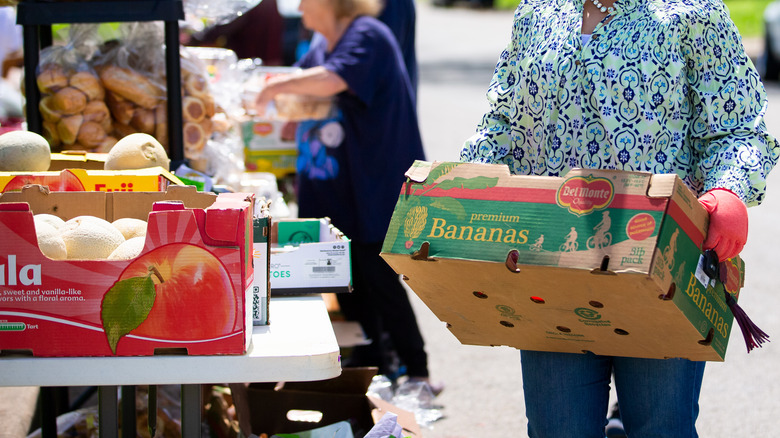New Feeding America Study Shares Truth About Food Insecurity In The US
Feeding America, the U.S.'s largest hunger relief organization, released its annual Map the Meal Gap report on July 20, painting a detailed picture about the growing problem of food insecurity in America by geographic and racial/ethnic lines. Food insecurity is defined by Healthy People as "the disruption of food intake or eating patterns because of lack of money and other resources."
According to the study, food insecurity exists in every one of the 3,143 counties in the United States, as well as every congressional district in the 50 states and Washington D.C., representing about 38 million people. The rates at which food insecurity exists vary widely from only 3% in Bowman County, North Dakota, to a high of 46.4% in Presidio County, Texas. Additionally, counties containing large urban areas like Los Angeles County, California, Harris County, Texas, and Cook County, Illinois have some of the highest numbers of individuals living with food insecurity in their jurisdictions, though those numbers represent much lower percentages of their populations.
The study also showed that nearly 90% of the counties with food insecurity in the top 10% of the rankings are rural, while 82% of the counties with the highest rates of food insecurity are located in the south, despite the region only accounting for 45% of the country's counties.
Despite these high numbers, nearly 30% of Americans going hungry do not qualify for government aid or SNAP benefits.
Problems for children and minorities
The Economic Research Service noted in 2020 that of the 38 million food insecure people in America, nearly 12 million were children. Like the overall patterns of food insecurity, these children are most concentrated in rural areas, particularly in the south, with East Carroll Parish, Louisiana having the highest rate of childhood food insecurity in the country at 46.4% (per Feeding America's Map the Meal Gap report).
The child statistics are particularly troubling as The Hill reported earlier in July that a recent study linked food insecurity and an inability to access SNAP benefits to increased rates of child abuse. These statistics, and others like them, are currently behind a push by Democratic lawmakers in congress to make expansions to childhood food programs like WIC and school lunch vouchers, which were implemented during the COVID-19 pandemic, permanent. According to U.S. News & World Report, the programs implemented during the pandemic helped reduce food shortage rates among families with children by over 40% in early 2021.
While the childhood hunger numbers encompass people of all ethnic backgrounds, more specific data in the Map the Meal Gap study pointed to even greater disparities between racial and ethnic backgrounds. While white Americans had the highest number of people suffering from food insecurity in 2020 — about 15 million — that figure represented less than 10% of the white population. Black families and Latino families were found to be much more likely to suffer from food insecurity with 24% and 19.3% of families reporting food insecurity in the two demographics, respectively, while 22% of Native Americans experienced food insecurity, on average, between the years of 2016 and 2022.
Part of a global crisis
The report comes amidst record high inflation and a global food crisis, which has been greatly exasperated by lingering supply chain issues from the pandemic and Russia's war on Ukraine.
USAID reports that the situation in Ukraine could lead to an additional 40 million people going hungry in economically strapped countries around the world in the coming year because it has cut off access to approximately 30% of the world's wheat supply from Ukraine and Russia. According to BBC, Ukraine also supplies the world's market with 16% of its corn, 42% of its sunflower oil, and 10% of its barley, while Russia is a major supplier of fertilizers and fuel needed to transport supplies.
Russia's blockade of Ukraine's ports and the Western-led sanctions of Russia's markets have led to prices spikes on everything from bread to meat and dairy products around the world, as even animal feed requires steady supplies of grain, which other countries have struggled to produce due to natural disasters and climate change.
In order to combat the growing issue, Feeding America requests Congress approve further funding for community food programs, improve SNAP benefits and simplify eligibility requirements, and increase child nutrition programs at schools and during the summer.


